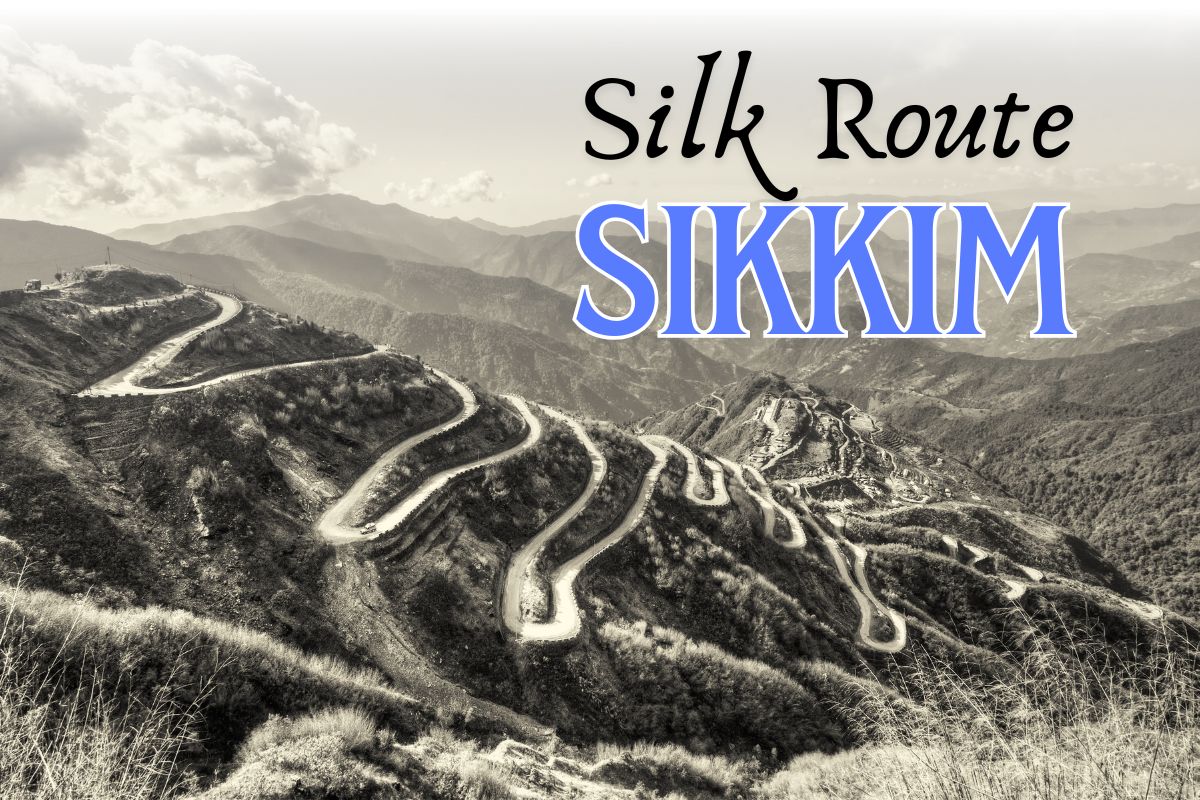


Have you ever wanted to travel through a route with beauty and history coupled with a little bit of excitement? The Silk Route, Sikkim, is exactly such—a delight that includes scenic drives through lofty mountains, following olden trade routes, as well as picturesque valleys sage. This route that is not known to many provides a link to a timeless history and the pristine beauty of Sikkim. If you are a fan of history or if you love nature, this journey is sure to be one that you will cherish for years to come. Get ready for a road not so commonly taken for an adventure of a lifetime.
Table of Contents
ToggleThe Silk Route in Sikkim is said to have been a historically significant route as it connected Lhasa, Tibet, with India via Jelep La Pass and Tamralipta port (presently Tamluk, West Bengal). This particular route was a branch of the greater Silk Road, which was a trade route and connected major economies of the world where items such as silken clothes, tea and spices would be traded and sold.
The “silk route” was named so because along these paths of passages silk was one of the main commodities traded and thus represented the rich exchange of cultural and economic aspects.
The Silk Route in Sikkim was a vital trade path connecting Lhasa in Tibet to India via the Jelep La Pass. Goods that were common through this route included silk, tea, and horses, and through this route, several regions established commerce ties. This trade boosted some communities economically and was a forwarding factor in terms of cultural exchange.
In addition to commodities, the Silk Route facilitated the exchange of ideologies, art, and customs. This perpetuated cross-cultural interactions, which merged various aspects of the people and their practices. These interactions nourished the multicultural composition of Sikkim.
From a strategic viewpoint, it acted as a corridor between the Yunnan province of China, the Tibet region and north-eastern India. It’s position made it important for political and military activities. Control over this route was crucial for regional dominance.
The ancient Silk Route is being described as an excellent place for adventure tourism today. With admiration of its historical past, trips to the world’s highest terrains are becoming ever more appealing. With its storied past and stunning natural beauty, the journey makes a compelling case for the yearning traveller.
The Silk Route in Sikkim is all that a traveller could ever dream of. The vast expanse of the Himalayas, glimmering green valleys and pristine lakes make the Sikkim Silk Route a travellers` delight. Zuluk’s winding roads are filled with twists and stunning sights. It is a travel spot that various photographers can go to to collect stunning pictures.
This Silk Route was once the most important link for trade between India and Tibet, facilitating trade between the two countries that revolved around silk, tea and spices. Walking or driving this route enables a tourist to go to a time when trade was flourishing. The remnants of trade days, old trade posts and the pathways make it even more interesting.
The Silk Route, travelling through villages of Zuluk and Nathang Valley, reveals the vibrant culture of Sikkim. Tourists make contact with the local people, are offered customary warmth, and during the right season, even join in the local celebrations. Staying in homestays enhances this cultural immersion.
Of all the available routes, the Silk Route is suitable for trekking, bird viewing and engaging in other undisturbed exploration for the adventure seekers. Beginners and experienced trekkers alike will be comfortable at the various levels of altitude and terrains the route has to offer. The thrill of navigating the zigzag roads adds to the adventure.
The ideal time to explore the Silk Route is during the summer months, from April to June, when the weather is pleasant and the skies are clear. Another favourable period is September to October, post-monsoon, when the landscape is lush and the temperatures are moderate. It’s advisable to avoid the monsoon season due to potential landslides and the winter months when heavy snowfall can block the roads.
The Silk Road, Sikkim, is a perfect mix of history, culture, and natural beauty. Whether you love adventure or peaceful mountain views, this route has something for everyone. It’s a journey you’ll remember forever.

